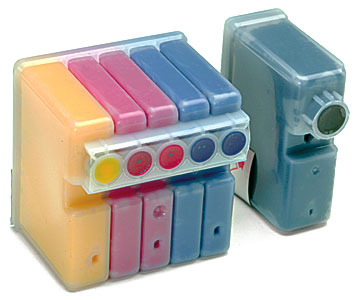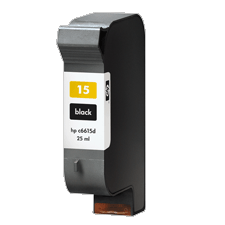Inkjet inks
Inkjet printers are fairly inexpensive. In fact, quite a few of the manufacturers sell some of their printers at a loss. Quite often, you can find the printer on sale for less than you would pay for a set of the ink cartridges!
Why would they do this?
Because they count on the supplies you purchase to provide their profit. This is very similar to the way the video game business works. The hardware is sold at or below cost. Once you buy a particular brand of hardware, then you must buy the other products that work with that hardware.
In other words, you can't buy a printer from Manufacturer A and ink cartridges from Manufacturer B. They will not work together.
Another way that they have reduced costs is by incorporating much of the actual print head into the cartridge itself. The manufacturers believe that since the print head is the part of the printer that is most likely to wear out, replacing it every time you replace the cartridge increases the life of the printer.
A typical color ink
cartridge:
This cartridge has cyan, magenta and yellow inks in separate reservoirs.
The simplest color inkjet printers made now are 4 color printers, using cyan, magenta, yellow and black inks. Better gradation in the pale tones can be obtained by including lighter shades of some of these inks, leading to 6 or 7 color printers, usually with light magenta and light cyan, and sometimes also a grey ink.
Dye or Pigment
Most inkjets use soluble colored dyes to produce inks, but there are also inks made using insoluble pigments. Dyes are dissolved in the ink medium, mixing with it at the molecular level, while pigments are dispersed to give a stable suspension containing much larger (though still microscopic) clumps of the pigment.
In general, pigments have a greater long-term stability and are less liable to chemical attack or fading by light. In part this is a physical difference. When a print is made on paper, the dyes are spread out in a thin layer on the surface and absorbed into it. Most of the dye molecules will be on a surface, accessible to attack by chemical agents such as ozone or acids and exposed to light.
Pigment particles are relatively large lumps containing the color, and only the molecules on the surface of the lump are easily attacked.



